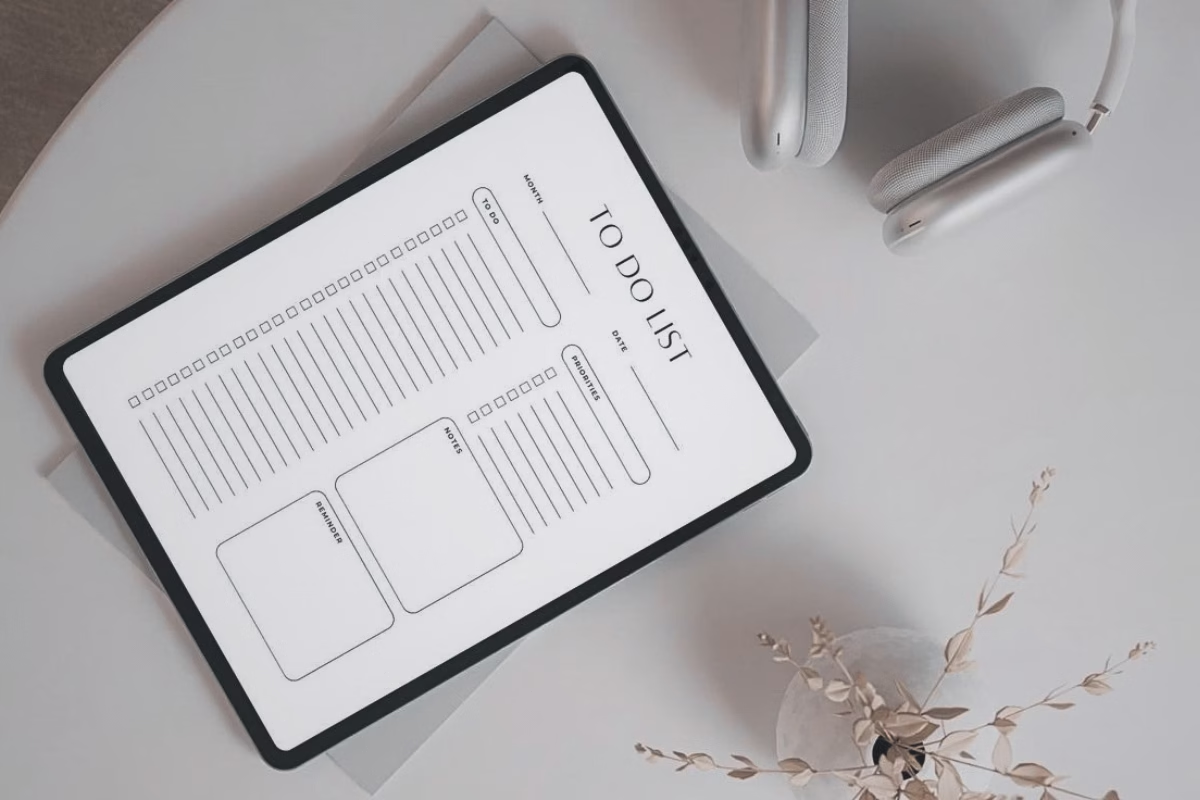Time Blocking vs. To-Do Lists: Which Enhances Productivity?
When it comes to organizing your day for maximum output, The choice between time blocking vs to-do lists shapes how you work—and how well you perform. So which is better? It depends on your goals, environment, and time management style. Time blocking offers structure, focus, and protected work sessions. To-do lists provide flexibility, speed, and task visibility. Each method supports different types of productivity, and for some, the most effective approach is a hybrid of both. In this guide, we’ll break down their strengths, weaknesses, and ideal use cases so you can build a system designed for real performance.
Time Blocking vs. To-Do Lists — What’s the Real Difference?
How Time Blocking Works
Time blocking is a time management strategy where every hour of your day is assigned a specific task. You divide your day into “blocks” of time, each dedicated to a single activity. No guesswork. No multitasking. Just control.
Commonly done with digital calendars like Google Calendar or tools like Notion, this method gives your day structure and clarity. It also limits distraction by eliminating open loops. It’s often used in calendar planning systems and can pair well with the Pomodoro Technique or task batching.
Time blocking also trains your brain to work with urgency—when the clock is ticking on a deep work block, you’re more likely to dive in rather than stall. You move from passive planning to proactive execution.
How To-Do Lists Work
To-do lists are more flexible. You write down everything that needs to be done, then check tasks off as you complete them. There’s no time component—just an unordered inventory of responsibilities.
Whether you use paper, a notes app, or a tool like Trello, to-do lists are easy to start and feel satisfying to finish. They’re often favored in task scheduling methods because of their simplicity.
But they also introduce ambiguity: What should you work on first? How long will each task take? Without those answers, your day can become reactive instead of strategic.
Core Differences That Impact Performance
- Time blocking prioritizes structure and intentionality. It gives tasks a container.
- To-do lists prioritize flexibility and responsiveness. They give tasks visibility.
In short: time blocking tells you when, to-do lists tell you what. One is proactive. The other is reactive.


The Strengths of Time Blocking
Benefits for Focus and Flow
Time blocking reduces cognitive overload by removing the need to decide what to do next. You know what your next block is. This allows for deeper focus management and longer deep work sessions.
It also makes it easier to practice task batching—grouping similar tasks into blocks for efficiency. Rather than context-switching between unrelated items, your day flows in cycles of similar energy or cognitive demand.
This structured productivity is ideal for people whose energy and attention are precious resources. Instead of leaking productivity through interruptions, you build impermeable walls of focus.
Ideal Use Cases for High Performers
Time blocking is especially powerful for:
- Entrepreneurs and creators with control over their schedules
- People aiming to enter “flow states”
- Strategic operators managing complex or layered projects
It aligns well with performance workflows that demand prolonged attention, output, and rhythm. When paired with habit stacking, it becomes a framework not just for work—but for life.


The Strengths of To-Do Lists
Simplicity, Speed, and Flexibility
To-do lists excel in situations where tasks are numerous, quick, or reactive. They’re fast to create and update, and they provide a clear picture of outstanding items.
They’re especially useful in daily planning routines where flexibility matters—like managing unpredictable meetings or ad-hoc tasks. For professionals who wear many hats, to-do lists reduce friction and help externalize mental clutter.
The beauty of a to-do list lies in its immediacy. You can jot down a new idea, task, or reminder instantly—without reworking your calendar.
When a To-Do List Is the Better Choice
- When you’re juggling multiple small tasks
- When your day is constantly changing
- When speed and task capture matter more than structure
To-do lists also work well when paired with prioritization systems like the Eisenhower Matrix or David Allen’s Getting Things Done (GTD). They can be the starting point of clarity, especially when used with digital productivity planning tools.
Common Pitfalls of Each Method
When Time Blocking Becomes Overkill
- Overplanning every moment can feel restrictive
- Constant rescheduling leads to planning fatigue
- Unexpected interruptions can throw off your whole system
Time blocking requires discipline and adaptability. Without flexibility, the structure can collapse under pressure. It can also trick users into perfectionism—thinking that a well-planned day guarantees a well-executed one. It doesn’t.
That’s why it’s crucial to leave buffer zones and recovery periods in your calendar. Think of time blocking like sculpting—not scheduling. You need space between the edges.
How To-Do Lists Can Create Chaos
- Long, unchecked lists can become overwhelming
- No sense of when to do each task
- Easy to prioritize urgency over importance
This often leads to “checklist bias” where easy tasks are done first, while high-value items are postponed. A to-do list without intention becomes a guilt archive—a growing reminder of everything you haven’t done.
If you find yourself avoiding high-impact tasks, you may benefit from learning about productive procrastination and how to redirect avoidance into momentum.


Which One Should You Use? Match the System to Your Work Style
If you thrive in structure, need long focus blocks, and want control over your calendar, time blocking is likely your best move. If your days are unpredictable and filled with short tasks, a to-do list may suit you better.
Here’s a quick breakdown:
- Time Blocking: best for proactive workers, deep thinkers, creatives, entrepreneurs, and knowledge workers.
- To-Do Lists: best for reactive roles, admin-heavy tasks, service providers, and multitaskers.
The question isn’t “Which is better?”—it’s “Which supports your performance identity?”
Why a Hybrid Method Works for Most
The truth? You don’t have to choose.
Using both creates a balance of clarity and flexibility. Block out your most important deep work in the calendar, and keep a to-do list for overflow and context-based actions. This approach eliminates both chaos and rigidity.
Here’s how a hybrid method might look:
- Morning deep work: time blocked
- Afternoon meetings & admin: reactive + checklist
- Evening review: prioritize next day’s tasks into blocks
This is the systems over hustle mindset. You’re not forcing productivity. You’re designing it.
Want to go deeper? Here’s how to build a high performance daily routine that turns structure into consistent execution.
Final Verdict: Build a System That Performs
When it comes to time blocking vs to-do lists, the real answer isn’t preference—it’s precision. High-performance routines aren’t based on what feels better. They’re built around what performs better.
If you work with intention, both tools can become weapons. Block time by theme. Execute with a focused list. Use structure to sharpen your attention, and flexibility to maintain momentum.
Here’s your move:
- Audit your system — Do you have structure? Do you have visibility?
- Start small — Block 2–3 hours. List 3 meaningful tasks.
- Refine weekly — Treat your workflow like a living system, not a static one.
Because productivity isn’t about doing more. It’s about designing better.
Common Questions
Is time blocking more effective than to-do lists?
It depends on your goals and work style. Time blocking is more effective for deep work, structured focus, and proactive planning. To-do lists are better for flexibility, quick task capture, and reactive work. Most high performers benefit from combining both.
Can I use time blocking and a to-do list together?
Yes—and it’s often the most powerful approach. Use time blocking to schedule focused work sessions and a to-do list to track smaller or context-based tasks. This hybrid method combines structure with flexibility.
u003cstrongu003eWhat’s the main difference between time blocking vs to-do lists?u003c/strongu003e
u003cbr/u003eThe core difference in time blocking vs to-do lists is structure versus flexibility. Time blocking schedules your tasks directly into your calendar, telling you when to work on each one. To-do lists simply outline what needs to get done, without assigning time. One creates intentionality through time management; the other offers a running inventory of priorities.
Which is better for time management: time blocking or to-do lists?
Time blocking is often better for managing your time with intention. It forces you to allocate time to tasks in advance. To-do lists help organize priorities but don’t solve for when or how long things will take.
How do I know which time management method is right for me?
Start by assessing your workload and work style. If you need long focus blocks, time blocking helps. If your day is unpredictable, a to-do list may work better. You can always refine your system over time.





